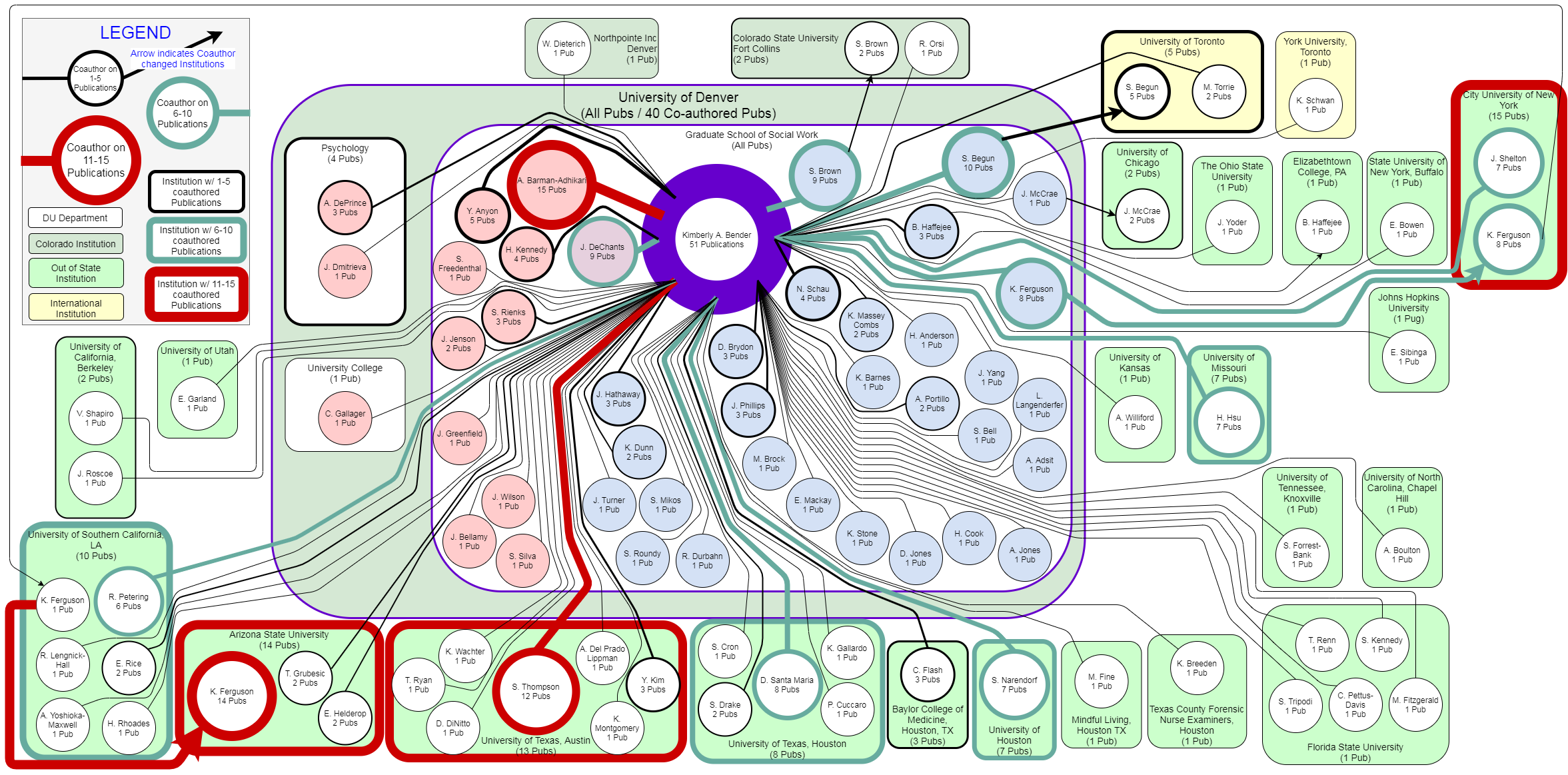Image: Visualization of Professor Kim Bender’s co-authored publications, used with permission. Created by Jenelys Cox, University Libraries
By Jack Maness, Associate Dean, University Libraries
One of the more important but admittedly tedious tasks for faculty is reporting their activities for merit, tenure, promotion, and related purposes. Entering your publications, presentations, creative performances and other intellectual contributions into Activity Insight may be onerous, but accurately and comprehensively accounting for the contributions DU’s faculty make to human knowledge allows us to celebrate, individually and collectively, our contributions to the public good.
As an example, above is a visualization of co-authored publications for a faculty member in the Graduate School of Social Work. It demonstrates internal and external collaborations, and thereby gives a sense of the national reach of her work.
Any attempt to gauge the impact of research includes tacit values, and different analyses by domain are possible, which we are exploring. These may include mentions of creative works on social media or in the news, reviews of books in prestigious publications, citation patterns, views of blogs or video lectures, even application of software or technology created by faculty members. This image is simply one of the more readily apparent uses of Activity Insight data. In any event, if metadata associated with faculty research are comprehensive and accurate, we can use them more effectively to celebrate our faculty.
In order to make such work more possible, and the use of Activity Insight easier, Institutional Research, the University Libraries, IT@DU, and other partners have been piloting services and technologies to minimize the overhead and maximize the benefit of Activity Insight for faculty. Part of an Impact 2025 effort, we are implementing ways to automatically harvest better metadata while we also work closely with faculty to improve existing, manually-entered metadata in the system.
- Integrated Activity Insight with publication data systems ORCID and CrossRef so faculty may easily harvest better metadata for some publications. Before entering publications manually, consider leveraging these integrations:
- Worked with over 60 faculty to correct or improve metadata for over 1200 manually-entered publications spanning the last 5 years;
- Partnered with two library software companies to develop and improve additional metadata harvesting systems, and are actively exploring automated integrations with Activity Insight and public-facing faculty profiles;
- These systems currently integrate with others that can track citations and social media mentions of your work:
- Inventoried DU faculty’s ORCID iDs and created ways to store them locally to facilitate automations;
- Contributed to the creation of publication tracking systems to monitor compliance with federal public access mandates, and are exploring ways to leverage these data in Activity Insight and other systems.
Moving forward, we are working with the Office of the VPFA to streamline and promote these services, and invite you to reach out to us if you are interested in:
- Our “cleaning up” your Activity Insight data,
- Signing up for an ORCID iD;
- Help with harvesting ORCID or CrossRef data into your Activity Insight account;
- Exploring how these data can be leveraged to demonstrate the impact of your work;
- Legally posting open access versions of your work to expand reach.
Please contact Jack Maness, jack.maness@du.edu for more information.

